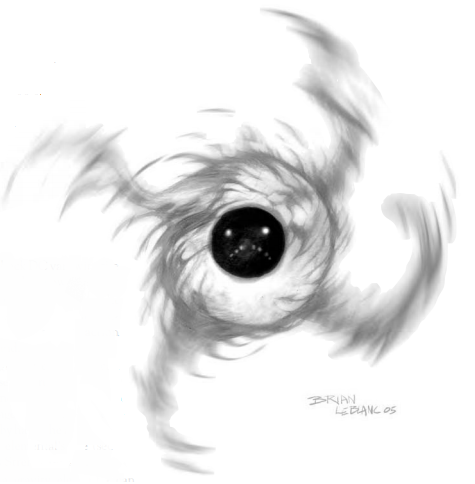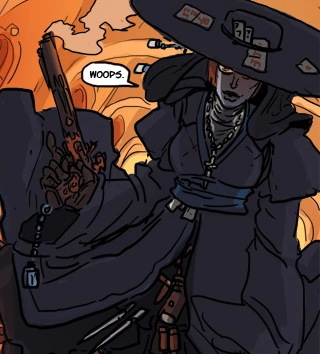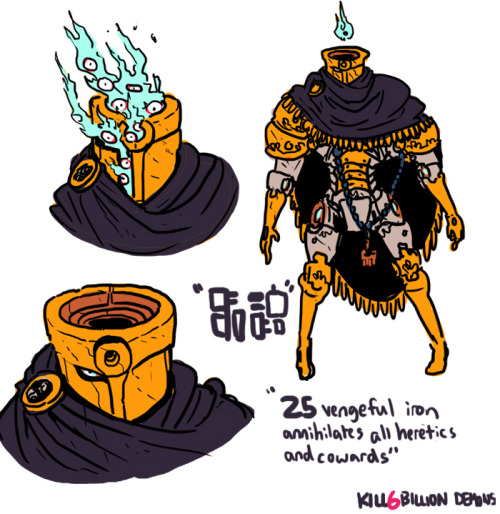Below there are the basic descriptions of many of the races of this world, along with false beliefs regarding them and their true origins.
The Serpent People
The Serpent People died out many thousands of years ago, possibly millions of years ago. They had empires that spanned the entire world, they studied the origins and machinations of magic, they fought or were allies with the ancient elves, and they had incredible lifespans. What made them fall nobody knows, but now there lie in many parts of the world the strange metal, stone, and plastic machines and buildings of these ancient people, forever rotting despite their enhanced strength of material
Many of the things above are true. However, there is one thing that most people do not know about these snake folk; they used advanced genetic engineering and other sciences to create a vast amount of the races and creatures that crawl the world today.
 |
| Like this, but with more blood and claws and tumors |
The Elves
I've written about elves before. Basically, they are sadistic pieces of crap.
Elves are just as old, if not older, than the Serpent People. However, unlike those snake men, Elves come from some otherworldly star or planet. The ones on our world have been stranded here for millions upon millions of years, slowly tearing the planet apart limb from limb. Elves are like an intergalactic disease, traveling from world to world only to destroy, maim, decay, and burn all in order to entertain their terrible immortal minds. They are chaotic beings from another world, and all (or most) fae creatures in the universe are descended from the original extraterrestrial stock. Elves in our world may come in many sorts, but those in space have horrifying monstrous variety. Many alien peoples know to flee when they see a vast and blubbery elfin leviathan barreling down through their atmosphere, ridden by and pregnant with the murderous violent spawn that will implode that planet.
The Humans
Humans come from many different cultures and races in our world, and they are the majority race, at least on the surface and in civilized lands.
Humans were modified from primitive and ancient apes by the Serpent People. They came in a handful of varieties that were bred for different uses, ranging from sport hunting to arena fighting to beauty pageants to information storage, which all interbred and merged together after the death of the snake empires, forming the hominid race that lives, breathes, and eats on the surface of our planet.
 |
| Upper Dwarf |
The Dwarfs
Dwarfs are short human relatives that live primarily underground, and come in two main varieties.
 |
| Lower Dwarf |
The second sort of dwarf is the "Lower Dwarf", which is found in the deepest caverns and subterranean expanses. They are pale-skinned and bright-eyed, with frail and slight frames wrapped in slimy and nigh-hairless skin. They do not have large civilization, and live underground in roving gangs and tribes. They crawl on the ceilings and walls of caverns, hoarding bones, coins, rocks, and anything else they find interesting. They are quite bestial, and have no qualms over stealing and murdering anything that has something tasty or shiny in its pockets or on its bones.
Dwarfs were also created from primitive apes by the Serpent People, but they were made for more specific purposes than humans originally were. Dwarfs were crafted and bred for two primary uses: work and war. Their emotions and minds were controlled by snake chemicals and machines, to make sure they were subservient and unwavering when working, or violent and unrelenting when fighting. These chemicals and machines have been gone for generations, leading to the widespread dwarfish paranoia and xenophobia that is widespread today, among other neurological disorders. Lower Dwarfs evolved from those original dwarfs that had been isolated in the deepest caves for centuries, changing their forms to fit their cavernous environs.
 |
| He's probably hiding a big fat queen in his attic |
The Halflings
Halflings are short and slight human relatives that lived in burrows and hives out in plains regions, before they were more forcefully integrated into human societies. Unknown to most humans, they live in eusocial hives ruled by a great and corpulent queen that births all of the hobbits in the nest, with most of the hive being sterile and muscular females. They function very similarly to eusocial insects, but they are hominid in origin. In human societies, however, they will typically hide their queens in a basement or attic, and will attempt to mimic a family usual to the human culture they are present in. There are also many halflings that have left their queens, and those half-pints are called Street Goblins. They live in chaotic and unstable gangs and tribes in the streets of cities and towns, stealing from rich people, begging on the sides of streets, brawling in alleys, etc. Halflings have been created with subservience in mind, either to a Serpent Person or to a queen, and when they have no leader they devolve into instability and violence. Street Goblins are able to reproduce without the need for a queen, though how is unknown.
Halflings, similarly to the races above, were created by the Serpent People. They were engineered as easily disposable pets and messengers, with queens created to produce mass quantities of these small humanoids. Their brains were wired to serve a leader, and their bodies were made small and slight in order to easily produce them cheaply. When the Serpent People all died out, this leader instinct and small frame coincided to create the eusocial halfling burrows and hives. However, since queens were expensive to maintain, as they required fairly large amounts of food, each and every halfling drone (the sterile female halflings) have a built-in ability to produce a single child agametically, which can be activated with certain chemicals in order to produce a quick messenger.
 |
| I said they came in staggering variety |
The Hoblings, Hobs, and Bugbears
Hoblings are small humanoid goblins that come in great uncanny and monstrous variety, with some looking just like small humans and others have more mutated features. Hobs are created when a Hobling reaches a certain age (varies from population to population), and enters a puberty-like stage, growing and mutating into a strong and human-sized Hob. Bugbears are a third stage in the life cycle of a Hob, and are born when either a Hobling or a Hob dies. After death, a Hobling or Hob decays and fills with insects, worms, grubs, bacteria, fungi, plants, and beasts of all sorts, becoming a monstrous undead abomination with glowing eyes of fireflies and squirming decomposers under its hairy and stretched skin, crawling on the fragile and dusty bones of the goblin.
Hoblings and Hobs are both quite different in behavior. Hoblings may seem fearful and naive, but in reality that hides a veneer of manipulation and stealth. Hoblings might seem like nothing more than simple thralls, but they are actually the ones pulling the strings. Hobs are more straight forward, and more often will bully others into submission rather than manipulation, though they are still quite conniving and controlling. Both Hobs and Hoblings are incredibly militaristic and greedy, and they love to take things from others and hurt others simply because they can. Bugbears, on the other hand, are sneaky shadow monsters and bogeymen, crawling through the night and stealing into houses and homes to their unknown deeds.
Hobs are one of the very few creation of the Elves, and were originally created as toys just to torture and as agents of the fae monsters. Hoblings were made as slight sneaks and masters of stealth, their many slight fingers useful as weapons and tools. Hobs were made more as soldiers, and they were trained to use brute force and violence to hold sway. Both stages of development become Bugbears after death simply because the Elves did not wish to lose vital assets to them. The extreme change over time was done to save on resources. Even though it may not be obvious at first, these creatures were made through collaboration with the Serpent People, during one of the periods when the two races were allies and friends.
The Orcneas
I've already written about Orcneas (they have undergone a name change). Basically, they are violent and murderous, but pretty friendly.
The Orcneas were created by the Serpent People as war machines. Dwarfs comprised the majority of soldiers (there were some Serpent soldiers as well), but Orcneas were like living tanks, siege engines, and cannons, or like berserkers, myrmidons, and other horrifically skilled and violent soldiers. Those larger sorts are called Ogres. Orcneas populations were kept low by the Serpent People, but after their death there were great booms in Orcneas populations, slowly turning into the horribly violent race known today. Their name is descended from the Serpent words for "Eaters of Corpses", due to them being fed on the rotting cadavers left behind after a battle. Orcneas are actually one of the few races made by the Serpent People who were not controlled chemically, but they were brainwashed and taught that violence and war was a game.
More is Coming Soon









